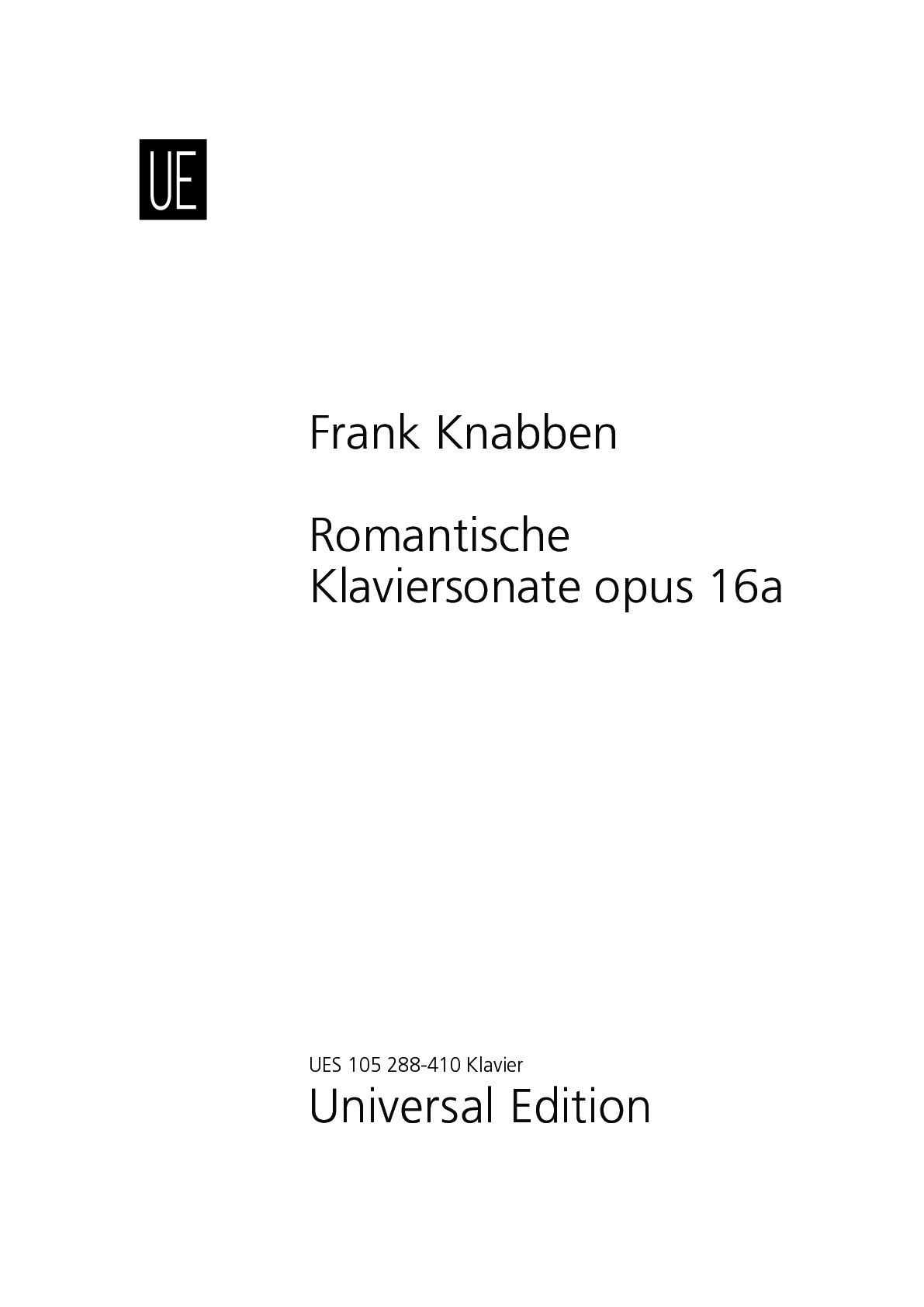.png)
Digital edition
immediately available as PDF
€23.95
Payments:
Shipping:
Frank Knabben
Romantische Klaviersonate opus 16a
UESD105288-410
Type: digitale Noten
Format: 210 x 297 mm
Pages: 40
Digital edition
immediately available as PDF
€23.95
Payments:
Shipping:
Audio preview
Description
The 'Romantic Piano Sonata' (opus 16a by Frank Knabben) is part of a cycle that the composer wrote down in 1995. It includes a total of four piano sonatas, each of which was inspired by one of the great musical epochs, both formally and melodically. Apart from Romanticism, as in the present case, the Viennese Classic, the Baroque and the 'New Music' of the 20th century are also included.
The work captivates through its elegance and simplicity. The composer consistently dispenses with superfluous accessories and exuberant outbursts of sound; there are, as the saying goes, just as many notes as are necessary. This fact is due to the fact that even less experienced pianists will enjoy playing it. For me, at any rate, this sonata has been one of my favourite pieces for years and I enjoy every time I open it on the music stand.
The main theme of the first movement begins with an upward octave leap. This smallest possible element of a motif runs through the entire first part like a kind of wake-up call. Only on closer inspection, however, does it become clear how skilfully and unobtrusively the composer uses it. A second theme contains this motif, as does a sequence in the secondary key of F major. In the recapitulation, contents of the second and third movements are already hinted at; a melody similar to a chorale leads to the last appearance of the main theme before the movement fades away quietly.
In the fast second movement (in the key of A minor), the theme consists of two motives: three thirds are broken upwards and a small sequence of notes leads back to the root note a. We have already become acquainted with the second motif; it is taken from the theme of the first movement, merely transposed to a different pitch. These two elements are enough for the composer to work out a rapid development in which the motifs are repeatedly thrown around in a colourful jumble and combined with each other in new ways.
The third movement, again in the main key of C minor, begins dignified and majestic. The brief introduction is followed by a second section which briefly elaborates and at the same time varies the harmonic sequence of the theme. It leads into a third section, first in E-flat major and then again in B-flat major. Here, the serious theme is juxtaposed with a friendly, folksong-like melody. This contrast is immensely appealing and is composed in a convincing manner. The last word, however, belongs to the opening theme.
The introduction of the fourth movement begins gloomily and ominously. The composer gives 'sciolte e misterioso' as the playing instructions. Hardly recognisable, themes and motifs already heard are hinted at and alienated in it. The main theme of the last movement rushes in like an ambush. It is the only movement that the composer has provided with a precise metronome indication. Here it takes a little time to master the prescribed tempo. The 8-bar melody sounds Eastern European and strangely familiar, as if a Hungarian Csárdás musician had stepped out of the piano. Suddenly and completely unexpectedly, a second theme is heard, changing time signature, key as well as tempo. We hear a waltz in the finest Strauss manner. It is precisely this abrupt change of theme, without any transition or announcement, that fascinates immensely. The return to the main theme, however, is somewhat more subtle. The rapid final section pauses briefly on a fermata, only to let the three final chords fade out like three exclamation marks.
Roman Thyhorf
More information
Type: digitale Noten
Format: 210 x 297 mm
Pages: 40

